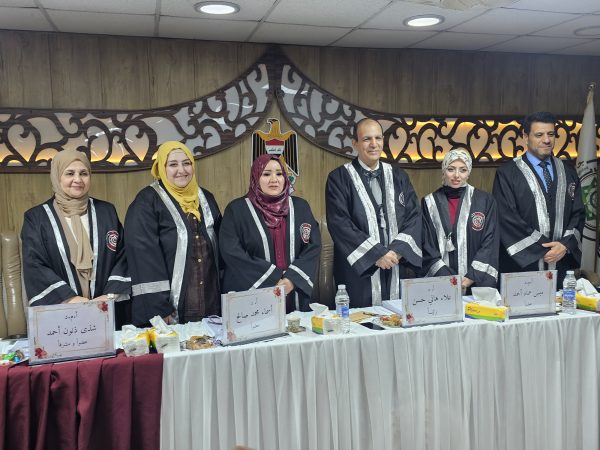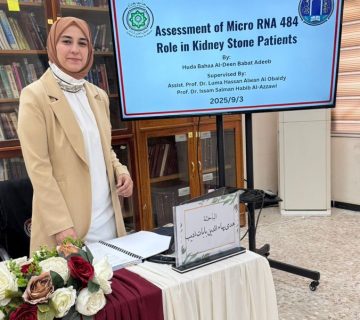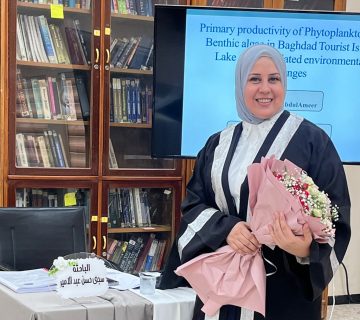College of Science for Women / University of Baghdad examined the thesis entitled (Evaluation of the Effect of Biosynthesized Selenium Nanoparticles by Allium sativum on Clinical Staphylococcus aureus Isolates) of the student (Intisar Hadi Talib), in Partial Fulfilment of the Requirements for the Degree of Master in Biology / Genetics
The thesis was conducted to assess the phenotypic and genotypic synergy impact of green synthesized selenium nanoparticles by garlic extract with azithromycin against methicillin resistance Staphylococcus aureus (MRSA) isolated from clinical specimens
this thesis includes collection (100) specimens from patients of burn and throat infections, then the diagnosis was confirmed using Vitek-2 system. The study examined the effect of biosynthesized selenium nanoparticles (SeNPs) by garlic plants on the gene expression of the (mecA and icaB) genes and the DNA sequence, as well as its effect on the growth and biofilm formation of methicillin resistance Staphylococcus aureus (MRSA), by selecting bacterial strains that showed resistance to azithromycin AZM. Four groups were used for the test (a group treated with azithromycin only, a group treated with selenium nanoparticles only, a group treated with a mixture of selenium nanoparticles with azithromycin (SeNPs-AZM), as well as a control group without any treatment).
The study found that selenium nanoparticles alone and the mixture selenium with azithromycin (SeNPs-AZM) reduced the level of gene expression (mecA and icaB), where the group of selenium nanoparticles with azithromycin recorded the lowest level of gene expression. The group treated with the mixture of azithromycin and selenium recorded the lowest rate of bacterial growth and biofilm formation, followed by the group treated with selenium nanoparticles only. The outcome of DNA sequencing revealed two types of mutations (silent and missense) that appeared more frequently in the isolates treated with SeNPs-AZM compared to the isolates treated with SeNPs or AZM alone. This study recommended that the present study provide fundamental insights into the framework of renewing unproductive antimicrobial agents and refreshing the usefulness of exhausted antibiotics. Moreover, it is also claimed that selenium nanoparticles (SeNPs) may have significant therapeutic potential against MDR and biofilm-producing microbes.
The final grade: Excellent










